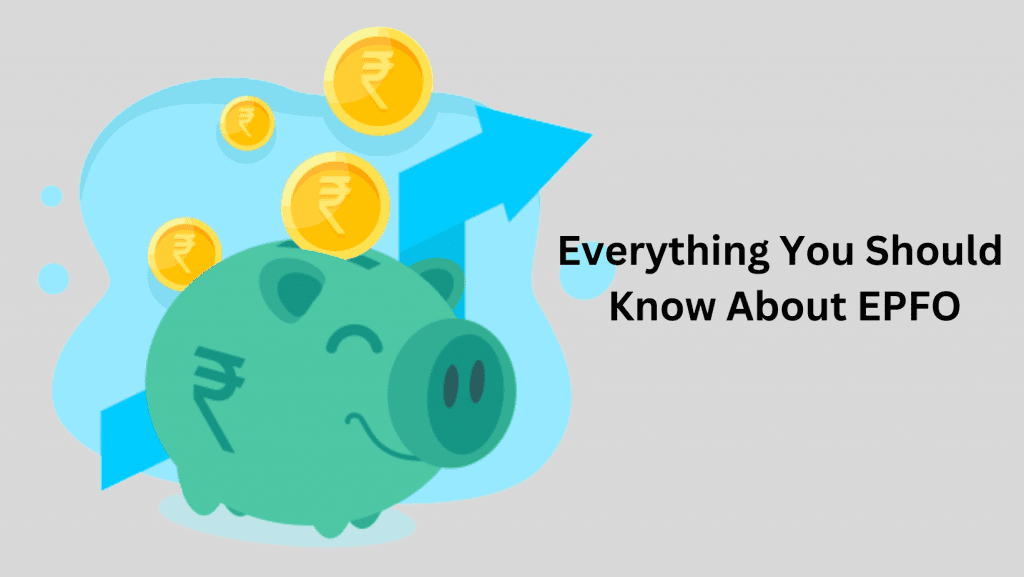Everything You Should Know About EPFO

The Employees’ Provident Fund Organization (EPFO) is a vital institution in India that manages the retirement savings of millions of employees across the country. Understanding EPFO and its functioning is crucial for both employers and employees. In this comprehensive guide, we will delve into everything you should know about EPFO, from its purpose and structure to the benefits it offers and how to navigate its various processes.
What is EPFO?
The Employees’ Provident Fund Organization (EPFO) is a legal body under the Indian Government’s Ministry of Labour and Employment. It was established in 1952 by the Employees’ Provident Funds and Miscellaneous Provisions Act, 1952. Its main purpose is to give financial security and stability to its enrolled members post their retirement.
EPF and Its Components
EPFO manages the Employees’ Provident Fund (EPF), which is a long-term retirement savings scheme. It consists of three main components:
Employee Provident Fund (EPF)
Contributions: Both the employee and employer contribute a certain percentage of the employee’s basic salary plus a dearness allowance (if any) towards the EPF account. As of September 2021, the contribution rate was 12% of the employee’s basic salary.
Interest: EPF contributions earn interest, and the interest rate is set annually by the government. For 2022-23, it is 8.15%.
Withdrawal: EPF funds can be withdrawn under specific circumstances, such as retirement, resignation, or medical emergencies. However, there are certain conditions and rules regarding withdrawals.
Employee Pension Scheme (EPS)
Contributions: Employers contribute a percentage of the employee’s salary to the Employee Pension Scheme.
Pension: This scheme provides a pension to employees after their retirement. The pension amount depends on the employee’s service years and pensionable salary.
Employees’ Deposit-Linked Insurance Scheme (EDLI)
Insurance Coverage: EDLI provides life insurance coverage to EPF members. It is applicable to employees whose monthly basic wages (plus dearness allowance) do not exceed a specified limit.
Insurance Amount: The insurance amount is a multiple of the average balance in the member’s EPF account, subject to certain limits.
Who is Eligible for EPF?
EPF is applicable to most establishments with 20 or more employees. However, certain organizations with fewer employees can also opt for EPF voluntarily. EPF is mandatory for employees earning a basic salary (plus dearness allowance) up to a certain limit, which was INR 15,000 per month as of September 2021. Employees earning above this limit can become members voluntarily.
How Does EPFO Function?
The EPFO functions as a three-tiered system:
Employees:
Employees contribute a part of their salary to the EPF account. This contribution is automatically deducted by the employer and credited to the employee’s EPF account.
Employers:
Employers are responsible for deducting the employee’s EPF contribution and making their own contributions. They must also file monthly returns and maintain EPF records for their employees.
EPFO:
EPFO is responsible for managing the funds collected from employees and employers. It invests these funds in various government securities and bonds to generate interest income for EPF members. EPFO also maintains members’ records, processes withdrawals, and ensures compliance with EPF rules and regulations.
The Benefits Of EPF
The EPFO offers several benefits to employees, including:
- Retirement Savings: The primary benefit of EPF is that it serves as a retirement savings scheme. Employees can accumulate a substantial corpus over the years, which provides financial security in retirement.
- Tax Benefits: Contributions made to EPF are eligible for tax benefits under Section 80C of the Income Tax Act. Interest earned on EPF contributions is tax-exempt.
- Liquidity: EPF funds can be partially withdrawn for various purposes, such as buying a house, funding education, or meeting medical expenses. These withdrawals are subject to specific conditions and limitations.
- Nomination Facility: EPF members can nominate their family members to receive the EPF corpus in case of their demise, ensuring financial security for their loved ones.
- Transferability: EPF accounts are transferable, which means that when employees change jobs, they can transfer their EPF account to the new employer. This ensures the continuity of their retirement savings.
How to Check EPF Balance
It’s essential for EPF members to keep track of their EPF balance. Here’s how you can check your EPF balance:
Online Method:
- Visit the EPFO’s official website.
- Click on the ‘Our Services’ section and select ‘For Employees.’
- Under ‘Services,’ click on ‘Member Passbook.’
- Enter your UAN (Universal Account Number) and password to do the EPFO login or the PF login.
You can view and download your EPF passbook, which shows your account balance and transaction details.
Missed Call Service:
To know your EPF balance, give a missed call to 011-22901406 from your registered mobile number. An SMS with your EPF balance details will be sent shortly.
SMS Service:
Send an SMS in the format “EPFOHO UAN ENG” to 7738299899 from your registered mobile number. You will receive an SMS with the required information.
EPF Withdrawal Rules
EPF withdrawals are allowed only under certain circumstances, such as:
Retirement:
When employees reach the age of 58, they can withdraw their entire EPF corpus. However, they can choose to keep the funds invested and continue earning interest until the age of 60.
Resignation:
If an employee resigns from their job, they can withdraw their EPF balance after two months of unemployment. The withdrawal is subject to certain conditions, and the employee’s contributions to the Employee Pension Scheme (EPS) remain locked until the age of 58.
Medical Emergency:
EPF members can withdraw a portion of their EPF corpus for medical emergencies or for the treatment of specific illnesses.
Home Loan:
EPF members can withdraw EPF funds to buy or build a house or for loan repayments. However, there are specific eligibility criteria and conditions for such withdrawals.
UAN (Universal Account Number)
The UAN is a unique 12-digit number assigned to each EPF member. It acts as a single point of contact for all EPF-related activities and facilitates seamless transfers and withdrawals. Employees should link their Aadhar card and mobile number with their UAN for added security and convenience.
EPFO Mobile App
To make EPF-related services more accessible, EPFO has launched a mobile app. The app allows members to check their EPF balance, access their passbook, and initiate EPF withdrawals. It also provides updates on claim settlements and other EPF-related news.
EPF Contribution During the COVID-19 Pandemic
The COVID-19 pandemic brought about some temporary changes to EPF rules. The government reduced the EPF contribution rate from 12% to 10% for both employees and employers from May 2020 to July 2020. This was aimed at increasing take-home pay for employees and reducing the financial burden on employers during the challenging economic situation.
EPFO Initiatives for Digital Transformation
EPFO has been actively working on digital initiatives to simplify processes and improve member services. These initiatives include:
- Online Claims: EPF members can now file claims online, reducing paperwork and processing times.
- Aadhar Seeding: Linking Aadhar to UAN has become mandatory to streamline EPF services and enhance security.
- Electronic Challan-cum-Return (ECR): Employers can pay EPF contributions electronically and file returns online, making compliance easier.
- Online Grievance Redressal: EPFO has an online portal for grievance redressal, ensuring quick resolution of member issues.
EPFO and the Future
EPFO continues to evolve to meet the changing needs of the workforce in India. The organization is expected to introduce more digital services, further simplifying processes for both employers and employees. Additionally, EPFO may explore opportunities to enhance investment returns to benefit its members.
Conclusion
In conclusion, the Employees’ Provident Fund Organization (EPFO) is a critical institution in India that plays a pivotal role in securing the financial future of employees. Understanding how EPF works, its benefits, and the processes involved is essential for every working individual. EPFO’s digital initiatives aim to make managing EPF accounts more convenient, and members should leverage these services to stay informed about their retirement savings.
Remember that EPFO rules and regulations may change over time, so it’s crucial to stay updated with the latest information through official EPFO communications and websites.








